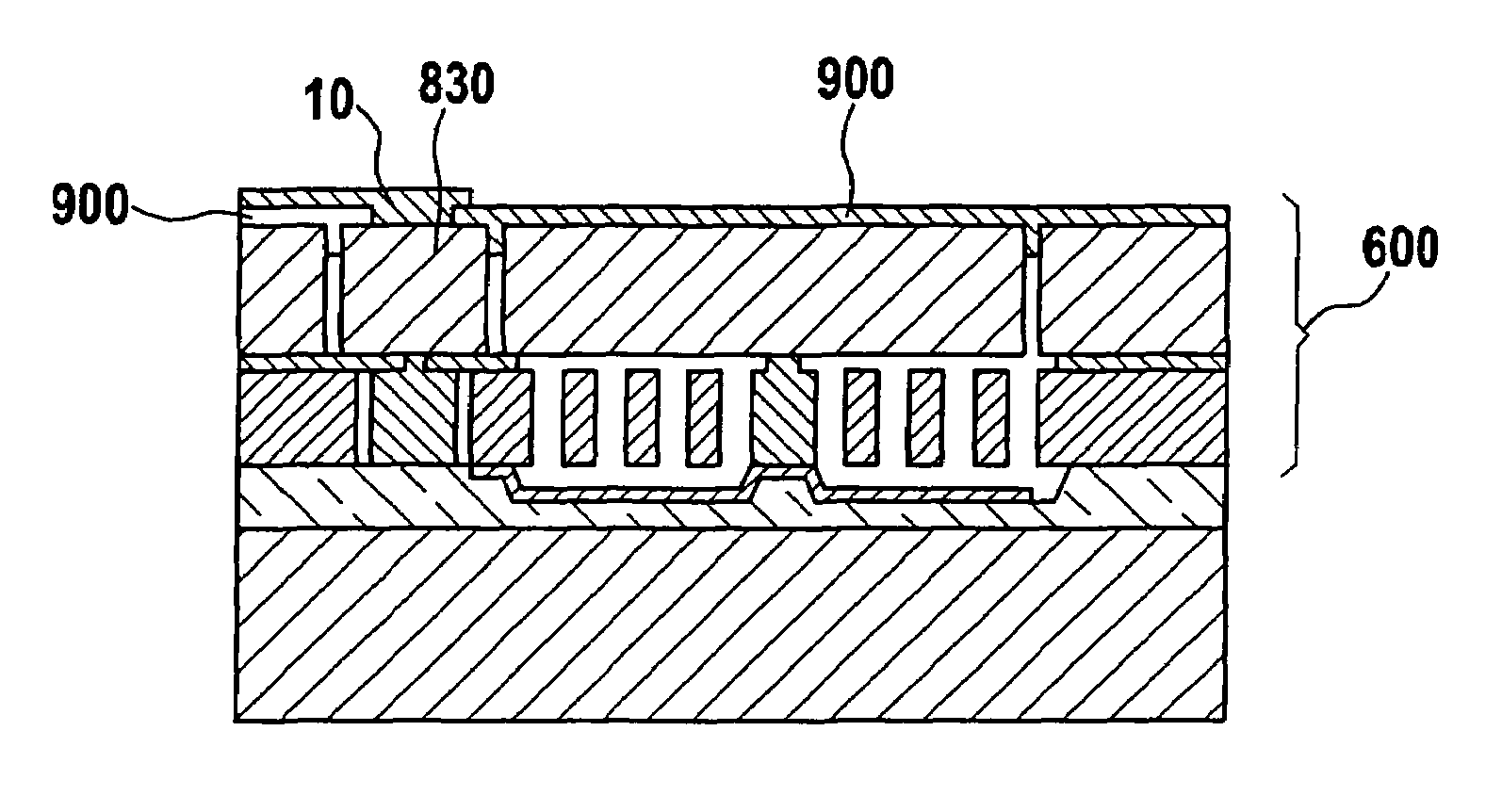Micromechanical component having multiple caverns, and manufacturing method
a micromechanical component and manufacturing method technology, applied in the direction of fluid speed measurement, instrumentation, and mechanical device details, can solve the problems of monolithic micromechanical sensors and the associated evaluation circui
- Summary
- Abstract
- Description
- Claims
- Application Information
AI Technical Summary
Benefits of technology
Problems solved by technology
Method used
Image
Examples
Embodiment Construction
[0033]FIG. 1 shows the preparation of a substrate and a glass for the manufacture of a cap. A cap substrate 100, which in this example is made of silicon, is disposed and aligned with respect to a glass 150. Glass 150 is made of Pyrex in this example. For joining, cap substrate 100 and glass 150 must exhibit a suitable roughness on the surfaces facing one another.
[0034]FIG. 2 shows the joining of substrate 100 to glass 150. The joining is accomplished, for example, by way of the technique of anodic bonding.
[0035]FIG. 3 shows the thinning of the glass layer. Thinning action 300 of glass 150 is accomplished by grinding and chemical-mechanical polishing (CMP). The result is to produce, in this example, a glass layer 150 having a thickness of approx. 50 μm.
[0036]FIG. 4 shows the production of recesses in the glass. Recesses 400 in glass 150 can be produced, for example, by a buffered oxide etch (BOE) method. In the example shown, recesses 400 have a depth of approx. 5.5 μm. Provision ca...
PUM
| Property | Measurement | Unit |
|---|---|---|
| atmospheric pressure | aaaaa | aaaaa |
| atmospheric pressure | aaaaa | aaaaa |
| pressure | aaaaa | aaaaa |
Abstract
Description
Claims
Application Information
 Login to View More
Login to View More - R&D
- Intellectual Property
- Life Sciences
- Materials
- Tech Scout
- Unparalleled Data Quality
- Higher Quality Content
- 60% Fewer Hallucinations
Browse by: Latest US Patents, China's latest patents, Technical Efficacy Thesaurus, Application Domain, Technology Topic, Popular Technical Reports.
© 2025 PatSnap. All rights reserved.Legal|Privacy policy|Modern Slavery Act Transparency Statement|Sitemap|About US| Contact US: help@patsnap.com



